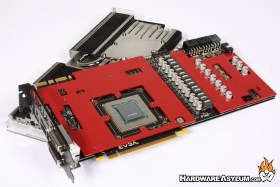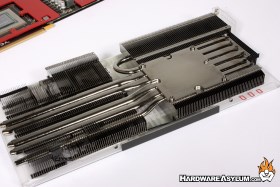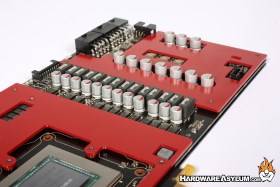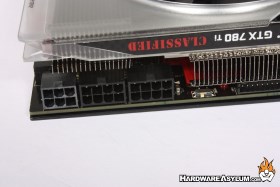EVGA GTX 780 Ti Classified K|ngp|n Edition Video Card Review
Author: Dennis GarciaClassified Kingpin Edition Uncovered
Despite the size of the ACX Cooling solution there are only 5 screws holding the cooler to the PCB. Four spring screws around the GPU and a fifth providing support near the upper edge. Removing these will allow the ACX to be removed and expose the components below
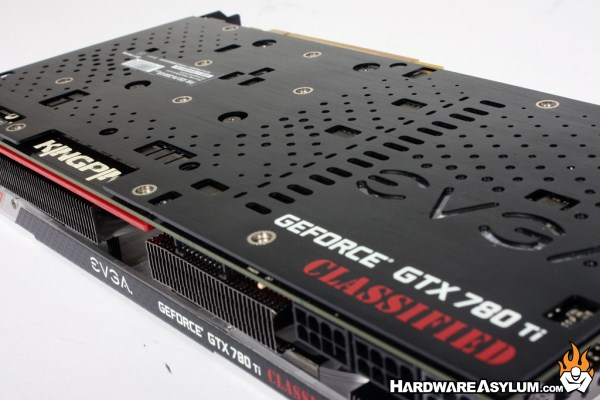
The EVGA ACX cooling solution is a heatpipe based cooler comprised of six nickel plated heatpipes radiating from a single GPU cold plate. One of the reasons this cooler is so efficient stems from its dedication to keeping the GPU cool while the underlying heat spreader is handles the lower power components like the VRM and memory chips.
Unlike some of the competitor cooling solutions the ACX cooler is configured to cool in stages. The primary stage is the fan located directly above the GPU, this is where the bulk of the heat travels and happens to be the hottest part of the heatsink. Once that side becomes saturated the longer pipes located over the PWM take over and start removing the excess heat.
For those wishing to watercool you have two basic options. The first will be to leverage the stock heatspreader and install GPU only waterblock. Another option would be to look for a custom full card cooler like the one from EK which replaces all of the aircooling gear with direct chip water cooling.
You will notice that the heatspreader is comprised of two parts. The first section covers the memory chips and provides independent cooling to that region of the card. The second covers the VRM area and is also thermally separate. The reason for this separation is simple, LN2 Overclocking. When you remove the ACX cooler to install a GPU pot you most also remove the stock heatspreader. If this was one piece, like on the regular 780 Ti Classified, you would lose your VRM cooler which can impact power delivery.
Both of the heatspreaders appear to be painted or power coated unlike the ones found on the regular Classified which is anodized black. In some cases the anodizing can have a thermal advantage but may not be as shiny.
One of the factors limiting how much a video card can be overclocked is the size of the reference VRM. Due to the lower power requirements Nvidia determined that a 6-phase design would be enough for a standard GTX 780 Ti. A hot-clocked video card often pushes the limits of a reference VRM and is why the EVGA GTX 780 Ti Classified KP Edition comes with something a little different.
You will find a total of 14 power phases on this video card with some dedicated to the GPU and others tasked with providing power to the memory and PCI Express. As you can imagine each of these power phases comes with a voltage adjustment however, GPU voltage will be one of the most important for raw performance.

